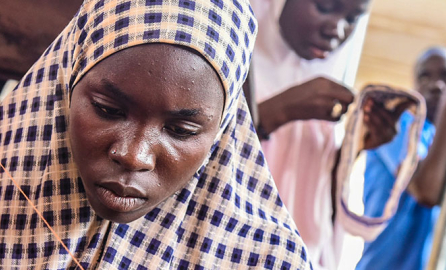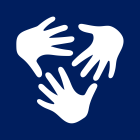Given the complex nature of gender inequality, factors that render women most liable to discrimination are not always easily identifiable. How can humanitarian and development actors get a clearer picture using intersectional analysis?
The concept of intersectionality can help organisations better understand the dimensions of gender inequality and its complexity. It allows humanitarian and development workers to design interventions that can tackle gender injustice without causing any harm, respecting cultural norms and strategising along with the communities’ positive plans for change.
|
What is intersectionality? Discrimination against women persists in every corner of the world, but the experience is shaped by interwoven factors that build upon and extend beyond the gender element. These factors include race, socioeconomic class, age, sexual orientation, disability and more. For more, read the thinkpiece “Intersectionality: Reflections from the Gender & Development Network” |
In 2017, Islamic Relief Worldwide piloted protective and inclusive programming in six countries. For the pilots, the humanitarian organisation created several tools, including an intersectionality framework to help understand gender identities, their social positions and immediate and strategic impacts.
Intersectional analysis
To identify the women at risk of exclusion, Islamic Relief started using a model based on a gender analysis of power and influence.
Sherin Alsheikh Ahmed on the intersectional tools developed by Islamic Relief for gender-inclusive programming:
The model analyses the underlying power structures that define public discourse; as everybody carries multiple identities, there is a tendency not to immediately spot factors that render women most liable to discrimination.
Islamic Relief’s programme staff, in turn, has been trained on inclusive programming to ensure they provide adequate support to those at risk of being marginalised.
The story of inclusive programming at Islamic Relief began in 2015 with the Age and Disability Capacity Building Programme.
“That’s when we began working on this agenda to see who is left behind,” said Sherin Alsheikh Ahmed, Protection and Inclusion advisor on age and disability at Islamic Relief. “We then created tools on intersectionality to look for multiple vulnerabilities and how those intersect to deepen gender-based injustice.
|
Islamic Relief in Gaza In the Palestinian territories, where a third of the working-age population is unemployed, women face significant barriers to achieving self-reliance. Experience gained through organisational work can prove valuable in terms of future access to employment. In 2015, the Islamic Relief launched the Social Safety Net programme to reach the most vulnerable groups, with a particular focus on marginalised women. The programme introduced a set of intersectional tools that help the organisation address the complex nature of gender-based discrimination. “In Gaza, women have a secondary social-status; they are subjected to oppression, lack social consideration and are considered worth less than men,” said Suha Abu Ghazala, Coordinator for Social Safety Net Projects with the Islamic Relief in Palestine. Suha Abu Ghazala on the Social Safety Net Programme in Gaza: The discrimination negatively affects women’s employment opportunities in a place where they already represent only 20 percent of the workforce. Faced with the threat of losing access to their basic needs, women are often coerced into marriage, but risk exclusion in case they get separated or divorced from their husbands. Because of the social stigma attached to divorce, single mothers also face considerable obstacles in providing for their families. “At Islamic Relief Palestine, we are proud that we have managed to reach most of those who are isolated and whose needs are ignored,” said Abu Ghazala. “Through an intersectional lens, we targeted women who have overlapping areas of discrimination and barriers that prevent them from reaching new goals.” When assisted with physically reaching a workplace or receiving help to prepare for taking up new tasks, the women adopted new social models. Also, workplaces were adapted to guarantee access to all women, and, to address marginalisation, the project was designed to be long-term. “Divorced, abandoned and pregnant women were given special consideration regarding access,” said Abu Ghazala. The organisation also provided support to women in rural areas, who often lack mobility and opportunities to seek work, while local communities were engaged to support women who had been widowed, had separated or were subjected to domestic violence. |
“Through our piloted inclusive programmes in some countries, our experience showed that there were different people that were left behind,” Alsheikh Ahmed said. “In the Gaza Strip, in particular, divorced women or women who had been abandoned by their husbands were also left behind by their community. Their needs had to be captured differently.”
In Gaza, Islamic Relief's social assistance was adapted to suit different needs and to ensure that the support would not deepen the level of exclusion but serve instead to enhance the women’s capacity.
“We also had to understand the control over access to resources,” Alsheikh Ahmed said. “In some cases, it was really shocking, as it turned out that some disabled women did not have access to even the most basic needs. Neither were young people with a hearing impairment allowed into education.”
Women with disabilities are discriminated against both when it comes to finding employment and in terms of relationships, whereby they are not considered suitable for marriage. By providing work opportunities in the framework of the social assistance programmes in Gaza, Islamic Relief has tried to level the field for them.
“Women with disabilities represent one of the most vulnerable and marginalised groups,” said Alsheikh Ahmed. “But there are other dimensions of intersectionality, such as a social dimension, geography and age that deepen the gender injustice faced by women on a daily basis.”
This approach of identifying long-term needs of groups at risk that require adapted assistance has since been expanded into eight countries, including Syria, Sudan, Ethiopia, Afghanistan and Pakistan. The formulation of new strategies called for dialogue with special groups, i.e. those left behind by their community.
Those groups differ from country to country – in Gaza, the most vulnerable women are often those abandoned by their husbands, resulting in them being shunned by the local community. In Ethiopia, orphaned children are most frequently left behind, whereas in Iraq, it’s people representing minorities. The needs of each of these groups have to be captured differently.
“Adaptive assistance means that women with disability can get something from the projects; it is about taking their needs into consideration,” said Alsheikh Ahmed. “The analysis looks at risks to their protection, as these women face the possibility of being left behind. To ensure adequate participation, all these groups have to be on board when approached in a gender-sensitive way.”
Every person faces obstacles unique to their situation, Alsheikh Ahmed added. “So, we use these analysis tools in all our interventions. Intersectionality is about addressing all these different gender identities to ensure that their differentiated needs are met and that they are not left behind.”
This article was written by Anna-Karin Friis, with input from Capacity4dev's editorial team.
|
Useful links: This Capacity4dev group aims to create connections and enhance cooperation and practice-sharing among people working on gender or who are interested in this issue. More information on how the European Commission is addressing gender equality in its development cooperation. |
Photo © Samuel Ochai/European Union




Log in with your EU Login account to post or comment on the platform.